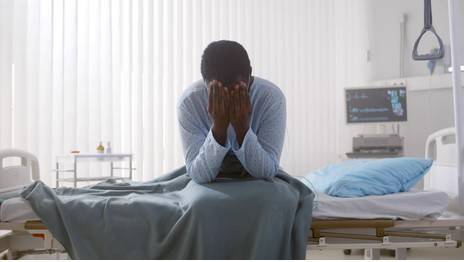It has often been said by people of the old that, "Death never takes the wise man by surprise, because he is always ready to go; and that, fear of death is ridiculous, because as long as you are not dead you are alive, and when you are dead there is nothing more to worry about.
Fear of death, also known as thanatophobia, is a complex and universal human emotion. When a person is nearing the end of their life, their body undergoes various changes. These changes can be subtle and may progress gradually over time.
Why do people fear death? Here are some few reasons:
1. Uncertainty: Death's unknown nature creates anxiety and fear in humans.
2. Loss of Identity: Death means end of one's sense of self and identity.
3. Separation from Loved Ones: Leaving behind family and friends.
4. Fear of the unknown afterlife: Uncertainty about what comes after death, or fear of punishment or judgment.
5. Regret and Unfulfilled Potential: Fear of not accomplishing life goals or resolving unfinished business.
Some emotional fear factors also includes; Fear of Pain or Suffering, There are also concerns about the process of dying, potential pain, distress etc.
Here are some common signs that indicate someone is dying slowly:
Here are some guidelines created by experts to help people better understand the physical changes of the dying-slowly process, as well as the emotional and spiritual end-of-life changes taking place.
The following describes the physical symptoms most people may observe:
Hands, arms, feet, and legs may be increasingly cool to the touch. The color of the skin may change and become mottled.
The patient may not know time or place and may not be able to identify people around them. If this end-of-life sign is occurring, Identify yourself by name before you speak. Speak normally, clearly, and truthfully. Explain things such as, “It’s time to take your medicine now.†Explain the reason for things, such as, “So you won’t start to hurt.â€
There will be an increasing amount of time spent on sleep. The person may become unresponsive, uncommunicative, and difficult to arouse.
Feeling Restlessness; The person may make repetitive motions such as pulling at the bed linen or clothing. This is due in part to a decrease in oxygen. When you see a person undergoing this, do not interfere with these movements or try to restrain them. Speak in a quiet, natural way. Lightly massage their forehead. Read to them and or play some soothing music.
Congestion. There may be gurgling sounds inside the chest. This is also sometimes referred to as a "Death Rattle". These may be loud. This end-of-life symptom does not indicate the onset of severe pain. With this sign, gently turn their head to the side to drain secretions. Gently wipe their mouth with a moist cloth.
Fluid and food decrease. Your loved one may want little or no food or fluid. The body will naturally conserve energy required for the task ahead. Food is no longer needed. If this end-of-life symptom is detected, do not force the person to eat or drink if they don’t want to. It only makes them more uncomfortable. Small chips of ice or frozen juice chips might be refreshing. A cool, moist cloth on their forehead might help.
Change in breathing. The person may take shallow breaths with periods of no breathing for a few seconds to a minute. They may experience periods of rapid, shallow panting. These patterns are common and indicate decrease in circulation. Care-giver can help by elevating their head or turning them on their side may bring comfort. Seek medical support.
It's essential to note that everyone's dying process is unique, and not everyone will exhibit all of these signs. If you're concerned about a loved one's health, consult with their healthcare team for guidance and support


